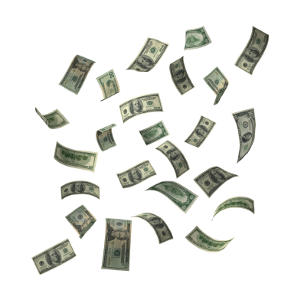
In previous articles, we’ve touched on the common uses of your POS system with regard to basic operation. Ultimately, the entire raison d’être of your business is to bring in revenue! So, how does one collect the money taken in by the cashiers and servers?
With a POS system and a little management, this process can be fast and easy, getting your employees out of the building efficiently to further save you on labor dollars that can be better spent elsewhere.
In the old days of mechanical cash registers, settling an employee’s cash owed was done either through a manual count of the drawer with no reference to an expected deposit, or through the use of a printed tape, often referred to as a “Z tape” or “Z report,” which showed the sales taken by that drawer. One would check the totals against the actual money in the drawer, and that represented the greatest accuracy one could achieve. With modern POS systems, there is no reason to limit the manner in which you account for your deposit simply by location.
Again, using POSitouch as our example, and acknowledging that most POS systems will work in similar fashion, your POS allows a variety of methods of resolving your deposit. If you are working in a table service environment, we recommend using the cashout feature. These cashouts are printed at the end of the shift, much like the Z reports of old, but succinctly report the sales of that particular server. In fact, this cashout can be configured to define in bold letters the amount to remit. Also configurable in this case are such factors as tip share, service charges and paid ins and outs, as well as displaying sales by category, or even defining single items for server contests! All of this is designed to provide the manager with a quick and simple method of discerning the cash owed by the server to collect for deposit.
For cashiers, the process is just as easy. One can define the cashout by terminal, cash drawer or cashier, whichever is most appropriate to the front of house operations. By assigning a drawer to a single cashier, described here, , one can increase the cashier’s accountability. If a single cashier is responsible for a cash drawer, and the cashout delivers the expected totals in said drawer, it’s a matter of simple math to determine shortages or overages. Additionally, the system may be configured to account for the beginning cash. Using this method, the manager may count the drawer down to the starting total, then the remaining cash would be the expected deposit. POSitouch also allows for “pull alerts,” wherein the system has a predefined cash total that will generate a system alert. For example, if this pull alert is set for $500.00, once that much cash has been deposited in the cash drawer, an alert will flash on all terminals¸ informing the manager that a pull is required, limiting the amount of money in a drawer at any given time. In fact, this setting can be further used to lock the drawer until said money is pulled.
 Once money is collected from servers and/or cashiers, the manager simply has to total this cash and compare to the final sales report from the back office. A cashout report can be used for this function, as well. We recommend, however, the use of the POSireport, a single page report which shows, not only the expected deposit, but also the labor cost for the day, discounts, category sales, a tax summary and paid ins or paid outs. The system can be programmed to prompt for entry of the actual deposit, thus calculating the day’s over/short totals automatically.
Once money is collected from servers and/or cashiers, the manager simply has to total this cash and compare to the final sales report from the back office. A cashout report can be used for this function, as well. We recommend, however, the use of the POSireport, a single page report which shows, not only the expected deposit, but also the labor cost for the day, discounts, category sales, a tax summary and paid ins or paid outs. The system can be programmed to prompt for entry of the actual deposit, thus calculating the day’s over/short totals automatically.
As always, all of the above-mentioned settings are designed to increase the productivity of the management. Be sure to think carefully about how your closing procedures may best be reflected in your POS purchase, and never be afraid to ask your POS dealer the hard questions to ensure that you are getting all the features you need to further expand your business!
